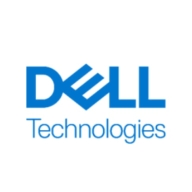

Dell PowerMax NVMe and Pure FlashArray X NVMe are leading enterprise storage solutions. Pure FlashArray appears to have an advantage in simplicity and cost-effectiveness, whereas Dell PowerMax offers extensive enterprise features and longevity.
Features: Dell PowerMax NVMe offers advanced replication, encryption, and end-to-end NVMe support. It is known for its robust performance, security features, and integration capabilities. Pure FlashArray X NVMe focuses on simplicity and innovative data reduction technologies, with high operational efficiency and an easy-to-use interface.
Room for Improvement: Dell PowerMax NVMe could improve in ease of management, cost efficiency, and user experience. Pure FlashArray X NVMe needs enhancements in support responsiveness, feature customization, and support structure.
Ease of Deployment and Customer Service: Dell PowerMax NVMe is straightforward to deploy, but users need better configuration guidance and customer support. Pure FlashArray X NVMe boasts rapid deployment and intuitive setup but some report delays in customer support.
Pricing and ROI: Dell PowerMax NVMe has higher initial setup costs but offers robust ROI through enterprise features and longevity. Pure FlashArray X NVMe is more cost-effective initially, with all-inclusive pricing and efficient ROI through reduced management costs.


Dell PowerMax is the industry’s most secure mission-critical storage platform. With NVMe Dynamic Fabric technology, PowerMax breaks from traditional storage limitations, enabling seamless integration with cloud-native and legacy applications. Designed with a powerful scale-up and scale-out architecture, PowerMax supports mission-critical applications at scale with zero downtime and ultra-low latency. The latest PowerMaxOS 10 release harnesses AI-driven efficiencies for trusted performance, capacity, and security. By choosing PowerMax, you can trust in a secure, intelligent, and always modern storage solution that unlocks the full potential of your data to drive business success.
Pure Storage FlashArray//X is the world’s first enterprise-class, all-NVMe flash storage array. It represents a new class of storage – shared accelerated storage, which is a term coined by Gartner – that delivers major breakthroughs in performance, simplicity, and consolidation.
We monitor all NVMe All-Flash Storage Arrays reviews to prevent fraudulent reviews and keep review quality high. We do not post reviews by company employees or direct competitors. We validate each review for authenticity via cross-reference with LinkedIn, and personal follow-up with the reviewer when necessary.